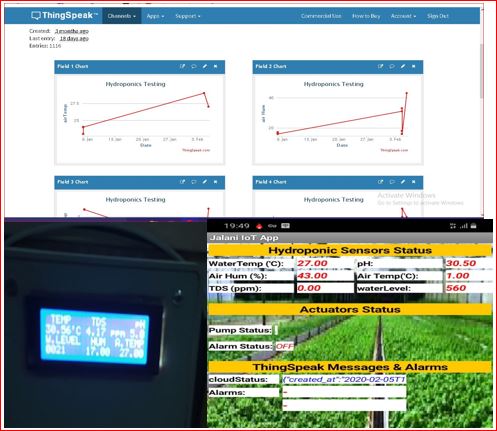The workplace has always been a dynamic environment, but the introduction of artificial intelligence (AI) and the Internet of Things (IoT) is revolutionizing how we think about safety. These cutting-edge technologies are not just changing the rules of the game they’re redefining the playing field entirely. But how exactly do AI and IoT enhance worker safety? Let’s dive in.
The Importance of Worker Safety

Worker safety isn’t just about compliance; it’s about creating an environment where employees can thrive without fear. Accidents and injuries cost companies billions annually, not to mention the human cost in pain, suffering, and lost livelihoods. In this high-stakes game, technology is proving to be an invaluable ally.
Treatment of Fatal Fungal Infections, Thanks to Genomic Research
What is AI in the Context of Worker Safety?
AI refers to machines and software capable of performing tasks that typically require human intelligence. In worker safety, AI helps analyze data, predict potential hazards, and even automate responses to dangerous situations. Think of it as having a super-intelligent assistant keeping an eye on everything, all the time.
How IoT Transforms Safety Practices
IoT, on the other hand, connects physical devices to the internet, enabling real-time data exchange. Smart helmets, wearable sensors, and connected machinery are all examples of IoT applications that enhance safety by providing actionable insights and early warnings.
Combining AI and IoT: A Match Made in Safety Heaven
When AI and IoT join forces, the result is a proactive safety ecosystem. IoT devices collect vast amounts of data from the workplace, and AI analyzes this data to identify patterns, predict hazards, and recommend preventive actions. Together, they create a system that’s always learning and adapting.
Real-World Applications of AI and IoT in Worker Safety
1. Wearable Technology
Wearables equipped with sensors can monitor vital signs, detect falls, or even identify exposure to harmful substances. For example, smart helmets can alert workers and supervisors if fatigue levels indicate a risk of accidents.
2. Predictive Maintenance
AI-powered predictive maintenance tools analyze data from IoT-connected equipment to foresee potential failures. This minimizes unplanned downtimes and reduces the risk of accidents caused by malfunctioning machinery.
3. Enhanced Monitoring Systems
CCTV cameras integrated with AI can detect unsafe behaviors, such as not wearing protective gear or entering restricted zones. Alerts can be sent in real-time to prevent accidents.
4. Environmental Monitoring
IoT sensors can measure air quality, temperature, and noise levels in real time. AI can then assess these metrics to ensure they remain within safe limits, alerting workers and management to potential hazards.
The Role of AI in Risk Assessment
AI excels at analyzing vast datasets to identify trends and risks that would take humans much longer to uncover. For instance, historical accident data can be used to predict high-risk scenarios, enabling preemptive action. It’s like having a crystal ball for safety planning.
IoT for Emergency Response
In emergencies, every second counts. IoT devices can provide real-time updates on the location and status of workers, guiding rescue efforts and ensuring timely medical assistance. Smart fire alarms and emergency beacons are just the beginning.
Enhancing Training Programs with AI
AI-driven virtual reality (VR) training programs offer immersive and realistic simulations of hazardous situations. Workers can practice responding to emergencies in a safe environment, making them better prepared for real-world scenarios.
Overcoming Challenges in Implementing AI and IoT
1. High Initial Costs
The upfront investment for AI and IoT systems can be significant. However, the long-term benefits in reduced accidents and operational efficiencies often outweigh the initial expenses.
2. Data Privacy Concerns
With IoT devices collecting vast amounts of data, ensuring this information remains secure is a major challenge. Companies must adopt robust cybersecurity measures to protect worker privacy.
3. Resistance to Change
Introducing new technologies often meets resistance from workers and management alike. Effective communication and training are essential to overcome these hurdles.
The Future of Worker Safety
The potential for AI and IoT in worker safety is virtually limitless. As these technologies continue to evolve, we can expect even more sophisticated systems capable of not only preventing accidents but also fostering a culture of safety.
The Ethical Dimension
While the benefits are clear, it’s important to address ethical considerations. Transparency in how data is collected and used, as well as ensuring that these technologies don’t replace human judgment entirely, is crucial for their successful adoption.
Real-Life Success Stories
Example 1: Construction Industry
A major construction firm implemented IoT wearables to monitor workers’ health and safety in real-time. The result? A 40% reduction in workplace accidents within the first year.
Example 2: Manufacturing Plants
A manufacturing company integrated AI-powered predictive maintenance systems, leading to a 30% decrease in machinery-related incidents and significant cost savings.
Conclusion
The integration of AI and IoT into worker safety protocols marks a significant leap forward. By predicting risks, enhancing training, and providing real-time monitoring, these technologies are saving lives and creating safer workplaces. As we move into a future where safety is proactive rather than reactive, the possibilities are as exciting as they are endless.
Inventions Stolen from Women and Credited to Men: The Untold Stories
FAQs
1. How do AI and IoT improve worker safety?
AI and IoT improve worker safety by predicting and preventing accidents, providing real-time alerts, and enhancing training programs.
2. Are these technologies expensive to implement?
While the initial costs can be high, the long-term benefits often justify the investment through reduced accidents and operational efficiencies.
3. Can IoT devices compromise worker privacy?
Yes, but robust cybersecurity measures and transparent data usage policies can mitigate privacy concerns.
4. What industries benefit most from AI and IoT in safety?
Industries like construction, manufacturing, mining, and healthcare see significant benefits from these technologies.
5. Is human judgment still necessary with AI and IoT?
Absolutely. These technologies are tools to aid human decision-making, not replace it.


